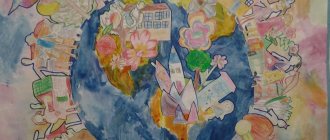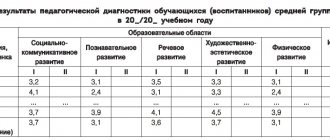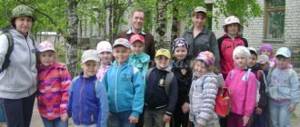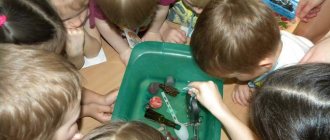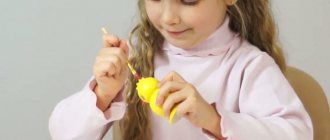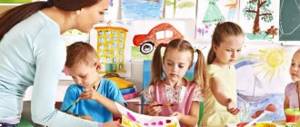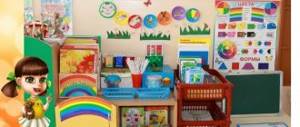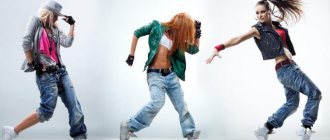04 July 2016
Averyanova Sveta
The child's body needs emotional and physical relief. It is generally accepted that you can only discharge yourself through active games, aggressive training in the gym or pool. This is wrong.
Let's consider a calmer option for charging the body and spirit. This is children's yoga. How Indian gymnastics is useful for children from the age of one year, when it is better to start training, what exercises to choose for practicing at home, you will find out in our article.
What is the benefit
It is wrong to view yoga one-sidedly as gymnastics. This is philosophy, science, worldview, didactics, the ancient practice of working with the spirit through the body. Children's yoga in this sense is no different from adult yoga.
It is aimed at strengthening the body and nervous system, developing willpower and forming an integral personality. The versatility of the concept of “yoga” allows us to talk about the various benefits of training for children.
Benefits of body exercises
- Coordination improves. Babies feel body tension, control muscles and the spinal column.
- Physical strength is trained. Yoga for children requires endurance, despite the apparent ease of performing asanas.
- Blood circulation is normalized. Due to proper breathing, hardening, and stretching of the vertebrae, the vessels no longer experience stress, and the blood moves freely.
- Brain function improves. The cells of the brain structures are saturated with oxygen, blood circulation is stabilized.
- Internal organs are strengthened. Systematic work becomes balanced and optimally effective. The immune system is strengthened, the functioning of the gastrointestinal tract is normalized, and the problem of constipation is solved.
- Pain is reduced. With systematic training, the number of acute respiratory infections, acute respiratory viral infections, and other disorders in the functioning of the body decreases sharply.
- The functioning of the respiratory system is normalized. The lungs increase in volume, children learn to breathe through the nose.
- Excess weight goes away. Yoga is indicated for children with low activity and obesity. Weight loss occurs at a slow pace, without racing for results.
- Posture is corrected. A person with a crooked back simply cannot carry out the trainer’s tasks. First, the child gets used to standing up straight during yoga classes, then he walks straight all the time.
- Increases muscle stretching and joint mobility. The body becomes more flexible.
The benefits of yoga for the spirit, nervous system, psyche
- Self-confidence increases.
- Harmony is restored within and in relationships with others.
- Emotions are under control.
- School performance improves due to increased memory and attention abilities.
- Anxiety and nervousness are reduced.
- Kids smile more often and become more positive.
The positive effect of ancient gymnastics for children is complex. The central nervous system is strengthened by training the body and vice versa.
This is interesting! Yoga has many directions. Each has its own philosophy and theoretical basis. When choosing a studio for children's classes, ask the teacher what type of yoga he uses as a basis. For physically weak preschoolers, a simplified version of hatha yoga is suitable; for intensive work on the harmony of the spirit, choose laya or kundalini yoga studios.
So, let's get started?
"Bridge Pose"
Starting position: lying on your back, legs bent at the knees. Place your arms along your body, palms facing the floor. Slowly lift your pelvis up. Hold the pose at the lifting point for up to 10 seconds. Then slowly lower yourself onto your back. Relax and get some rest.
This exercise helps correct posture and strengthens the abdominal muscles.
"Cobra Pose"
Starting position: lying on your stomach, legs together, toes extended. The arms are bent at the elbows. Palms rest on the floor. Smoothly straighten your arms. Gradually raise your head, chin, shoulders, chest. Try to hold the pose for 7-10 seconds. Then we slowly lower ourselves to the starting position and relax.
The functioning of internal organs improves and flexibility increases.
"Dragonfly Pose"
Starting position: lying on your stomach, arms extended along the body, palms down. Slowly move your arms back and up. Lift your legs off the floor, lifting them up. Hold the pose for 5-10 seconds. Breathing is voluntary, calm. Then slowly lower yourself to the starting position.
The abdominal muscles are strengthened.
"Frog Pose"
Squat down slowly. Spread your knees to the sides without lifting your heels from the floor. Stay in this position for 5-10 seconds. Breathing is voluntary. Return to the starting position.
Exercise strengthens the knee joints and also improves the functioning of the digestive system.
"Heron Pose"
Stand straight, legs together, arms down along your body. Slowly bend down without bending your knees. Try to press your head to your knees, clasping your legs with your arms. If you can’t immediately tilt, you can simply touch the floor with your hands. Hold the pose for 5-7 seconds and then return to the starting position. Breathing is voluntary.
This exercise strengthens the thigh muscles, spine and improves digestion.
"Call Pose"
Starting position: lying on your side, arms extended along the body. Slowly bend your knees, pressing them towards your chest with your hands. Breathing is voluntary. Hold the pose for 5-10 seconds. Then return to the starting position.
This exercise strengthens the abs and spine.
"Good Cat Pose"
Standing on all fours (emphasis on your palms and knees), simultaneously raising your head and tailbone, arch your back. Stay in this position for 5-10 seconds. Breathing is calm and voluntary. Return to the starting position.
This exercise strengthens the abdominal muscles and spine well.
"Angry Cat Pose"
Standing on all fours (emphasis on your palms and knees), lower your head, arching your back upward, as if drawing in your stomach. Try to hold the pose for 5-10 seconds. Breathing is voluntary. Return to the starting position.
This exercise develops flexibility.
Optimal age to start
You can start health fitness at almost any age, even as young as one year old, by doing simple breathing and gymnastic exercises at home.
It is better to study seriously, with a specific goal, by attending courses or special centers in older preschool age.
Teachers who practice yoga with children advise choosing the age period for starting training and getting acquainted with non-traditional gymnastics according to the following criteria:
- It is enough for an infant to study at home with his mother. Babies enjoy stretching, stroking, and hardening procedures. At this stage, we are not talking about philosophy, of course. But it is possible to achieve emotional comfort from a family hobby.
- At 2–3 years old, conduct short breathing and physical exercises in kindergarten. Classes are held in the form of a game, the duration does not exceed 30 minutes, 1–2 times a week.
- At 4–5 years old, children repeat more complex movements after the instructor and control their breathing. Continue training at preschool, repeat at home 2-4 times a week. Lesson duration: 30 minutes.
- At 6–7 years old, bring your preschooler to a yoga center. This is the optimal age to start mastering the practice, especially if you didn’t do yoga in kindergarten. A special program with elements of breathing training is drawn up for children. The lesson can last 40 minutes.
- From 8 to 13 years old, schoolchildren master simplified meditation techniques and complex asanas. The training lasts more than 40 minutes–1 hour.
- Teenagers who have completed a children's yoga course practice at home on their own. The complexity of the exercises depends on the level of physical and mental preparedness of the child.
Each parent decides for himself at what age to introduce a child to yoga.
Practice shows that early learning does not cause harm. If mothers and fathers themselves are interested in Indian gymnastics, they bring their children to trainers at 2–3 years of age, but before that they practice at home from 6 months to 1 year.
Hatha yoga - an unconventional method of improving the health of preschoolers
Every person wants to be healthy. The realization that health is the greatest value sometimes comes to a person too late. But Socrates also said: “Health is not everything, but everything without health is nothing.” The foundations for the development of a healthy lifestyle are laid in childhood, when the child acquires many habits, including the skills to perform vital movements that significantly affect the functioning of the body’s organs and systems. Recently, in our kindergarten, my children and I began to practice the hatha yoga system (which includes physical exercises - asanas, self-massage, finger exercises) and use elements of breathing exercises (pranayama).
What is hatha yoga? Hatha yoga is a special yoga for children, based on animal poses and surrounding objects accessible to preschoolers. “Ha” stands for the sun, a symbol of warmth, activity and energy. "Tha" - moon, cold, passivity and inhibition. Unlike other physical exercises, which are dynamic in nature, in Hatha Yoga gymnastics, the main focus is the static maintenance of poses. Their implementation requires smooth, meaningful movements, a calm rhythm and puts a moderate load on the body. Hatha yoga is a combination of physical exercises (asanas) and breathing exercises (pranayama). Exercises in hatha yoga copy the poses of animals, birds, certain positions of people, and objects. It is advisable to accompany the entire complex with specially selected music. Yoga is a full-fledged gymnastics that develops and strengthens all the muscles of the body, an excellent way to combat poor posture and a way to become flexible. Connecting movement and breathing while performing poses is an additional means of healing the body. Relaxation at the end of the lesson helps children discover the pleasure of peace and silence. Yoga provides an opportunity for a child's limitless imagination.
Children's clothing during classes should be lightweight: a T-shirt and shorts, bare feet.
-The poses should always be performed after breathing exercises.
-A set of Hatha yoga exercises should be built in a strict sequence: first, exercises performed from a standing position, sitting, then lying down.
-Before starting the exercises, you need to do a dynamic warm-up. This will warm up the muscles and prepare the body for static load.
-When mastering poses, it is necessary to follow the principle of gradualness: avoid overexertion in children.
-When learning the Hatha Yoga complex, a clear demonstration of the exercises is necessary.
-The main criterion for the correct execution of poses is a feeling of cheerfulness and good mood.
Features of yoga for children
Yoga for kids is an affordable way to have fun in a group with peers or parents. To prevent Indian exercises from causing harm, organize lessons according to simple rules:
- For young children, up to 6-7 years old, turn training into a game. Choose simple, accessible asanas, but ensure their exact repetition.
- Follow the sequence of tasks. Select a complex for practicing at home based on video lessons and master classes.
- The first classes should not last long (10–15 minutes). Don’t discourage gymnastics with tedious and drawn-out lessons. It is better to do 5-6 exercises effectively and in a good mood than to do 20, but through force.
- Ventilate your gym or exercise outside during warmer months. Proper breathing requires fresh air.
- Schedule your classes so that they take place during the day. Evening, the period of getting ready for bed is not the best option.
- Feed your child 1–1.5 hours before physical education and 30–60 minutes after.
- Lay down soft rugs to make your knees, back, and legs comfortable.
- Put your baby on shorts, a T-shirt made of breathable, stretchy material, and socks.
- Remove glasses, jewelry, watches.
- Ask your child to go to the toilet before class.
- Select poses and tasks according to age.
- Be sure to warm up. Swing your limbs, smoothly rotate your joints, turn, and jump.
- Pay attention to the general well-being of children on the day of training. If you notice signs of ARVI or a headache, cancel the lesson.
- With scoliosis, the child must control sensations in the back area. If he is in pain or tired, let him lie flat on the floor and rest for 3–5 minutes.
- Teach children to breathe correctly while doing exercises. Inhale and exhale through your nose.
- Conduct lessons with children under 3 years old together with their parents.
- To harmonize the process of getting ready for a lesson, use soothing music.
- Give theoretical lessons. Look at pictures with poses with your child, try to complete the task together a few days before introducing the asana into the lesson program.
Yoga in kindergarten. Senior group
Organization of circle work in preschool educational institutions
Preschool age
is an important period for improving the basic functions of the body, the formation of vital motor skills, skills and physical qualities.
Motor activity should become a natural need of almost every child, regardless of the level of his individual motor activity. How work with children in physical education is organized will determine whether the child will be physically ready for school, and most importantly, his health. In order to preserve and strengthen the health of pupils, our preschool institution uses various health technologies and techniques. So I decided to develop a program and organize a children’s yoga group. The relevance of this form of work lies in the fact that today's children are faced with problems such as hyperactivity, anxiety, stress, malnutrition, underdeveloped muscles of the legs and arms, and back, which affects posture. It is important to create healthy habits as early as possible to develop them. Gymnastics with elements of hatha yoga is available to preschool children. Unlike other physical exercises, which are dynamic in nature, in Hatha Yoga gymnastics, the main attention is paid to the static maintenance of poses. Their implementation requires smooth, meaningful movements, a calm rhythm and puts a moderate load on the body. Children of all ages and abilities can practice yoga. What is children's yoga? Yoga is an ancient system of healing and strengthening the body, as well as gaining mental peace and balance. It helps to achieve lightness, cheerfulness, energy, improves the functioning of all organs and systems of the body, increases tone, stabilizes digestion, gives excellent health and mood, and clears the mind. Children's yoga is a set of classes based on hatha yoga, which creates all the conditions for the harmonious growth and development of children. Most of the exercises performed by children are only vaguely reminiscent of asanas and pranayama. Asanas are yoga poses aimed at developing coordination, strength, flexibility and endurance. Pranayama - breathing exercises. How to organize activities with children?
For preschoolers, it is advisable to build classes on a fairy-tale plot or on a plot from the life of the natural world, which is filled with gymnastics, exercises for the development of the vestibular apparatus, dancing, didactic and outdoor games, games for the development of attention, memory, logic, imagination, plastic arts, fairy tales, speech games .
All exercises must be done correctly and carefully, without tension. Brief description of the structure of the program: The program is designed to work with children of senior preschool age (from September to May). The Hatha Yoga course lasts nine months and includes 9 changing training complexes, as well as conversations about a healthy lifestyle. Classes are conducted in a group (10-15 children), once every two weeks for 25-30 minutes. Class participants: Preschoolers 5-7 years old, without restrictions on the health group, with a low level of development of physical qualities; deviations in the emotional-volitional sphere; difficult to adapt. The program is developmental in nature. The purpose of the program: - To form children’s ideas about yoga. Development of physical qualities in children 5-7 years old through Hatha Yoga gymnastics. Program objectives: 1. Improvement of mental processes. 2. Knowing your character, strengthening your will. 3. Development of attention, concentration, organization, imagination, fantasy, ability to manage one’s actions and feelings. 4. Developing the ability to relieve fatigue, strengthen weak muscles, develop flexibility, improve posture, breathe correctly, and relax. 5. Spiritual enrichment: teach to be clean externally and internally, patient, calm, cheerful, and not harm others. 6. Formation of posture. 7. Development of the need for a healthy lifestyle. 8. Create emotional well-being. The motto of the classes: - start the class with a good mood and faith in success, where everything depends only on desire, perseverance and good intentions. Expected results of the program: • Increasing the level of physical fitness and development of physical qualities in children 5-7 years old who had a low level of development. • Stabilization of the emotional background in children. • The need for a healthy lifestyle in children and parents. • Formation of parents' ideas about the physical capabilities of children, age requirements and requirements of the kindergarten program. References: 1. Belov V.I.
Yoga for everyone M. “KSP” 1997. 2. Osipova V.. Child’s pose “Hatha Yoga in kindergarten.” J. Hoop No. 3-1997 3. Panda K.N. Simple yoga for good health / Transl. from English – St. Petersburg: “DILYA Publishing House”, 2010. – 104 p. 4. Shiffers M.E. Iyengar – yoga for everyone / Maria Schiffers. – M.: Eksmo, 2011. – 176 p.: ill. 5. Shchetinin M.N. Breathing gymnastics by A.N. Strelnikova - M.: Metaphor. – 2003. Download Children's hatha - yoga. Harmony. Development. Joy
Applications to the Children's Hatha Yoga program
We recommend watching:
Work plan for a circle for children of the younger group of a preschool educational institution. Summary of the final lesson of a circle for a correctional group of different ages at a preschool educational institution on the topic: Fairy tales. A theater club lesson in a kindergarten in the middle group. Abstract Sports leisure in the senior group of preschool educational institutions. Fast and agile
Similar articles:
Surprising moments in kindergarten classes. Card index
Kindergarten teacher business card
Presentation of kindergarten for parents
Why do we need holidays for children?
Assessment of the development of preschool children 2-3 years old
Exercises
Training tasks for kindergarteners and schoolchildren are a lightweight version of the complex for adults. For training, choose any of the above, but be guided by the age of the young yogi.
For the little ones
The best way to interest young children in repeating body movements after the instructor or mother is through play. Come up with interesting associative names for simple exercises yourself. If the child likes a bunny or a bear, then focus the plot of the lesson on these characters.
Here is an example of a lesson for beginners to learn yoga at the age of 3–6 years. The number of tasks depends on the child’s level of physical fitness. In the first or third lesson there should be from 5 to 10, then the number gradually increases.
There is no need to teach such exercises in advance.
Bunny woke up
Sit in a simplified Turkish pose; your feet do not need to be tightly connected. Stretch your arms out to the sides. Tilt your body slightly.
Stretch your paws
We roll over onto our stomachs and stand with support on our palms and knees. We alternately stretch our arms and legs, stretch, and bend our back. You can do it in pairs if there are two or more students, trying to reach each other with their paws.
Sweeping the floor
We stand straight, inhale, lower our arms and body down. Let's exhale.
We make movements with our hands from side to side, as if sweeping the floor with a broom.
Go for a walk
We walk on the mat and back, supporting the outer and then the inner sides of the feet. You can jump a little after your walk.
Playing hide and seek with the bunny
We sit on the floor. Legs are straight. Stretched out in front of you. We reach our fingers to our heels. Fold in half as low as possible. We lower our heads and hide in our knees. We fix ourselves and return to the starting position.
The bunny decided to look around
Sit on the floor and cross your legs. We bring one handle back, place it behind the back with emphasis on the palm. We rest the other one on the knee. Carefully turn the body back. We look around. We change hands.
Swing
The bunny wanted to swing. We lie down on the mat. We tear off our arms and legs from the floor. We put our hands back, clasp our knees and swing on our tummy. Can be used as a paired version of the exercise. The child fixes the pose, the adult rocks it. Then vice versa.
Hare plays with a ball
The head acts as a ball.
The bunny threw the ball and it rolled. We turn our heads from side to side, movements are careful, slow. You can perform it lying down, raising your body with outstretched arms, sitting and standing.
The bunny is tired and thoughtful
The legs are crossed at the shins, the hands are placed palms up on the knees. You can cross your fingers like real yogis and hum. We breathe evenly through our nose. We close our eyes and remain silent. Complete calm sets in and we rest.
A few more exercises
Kids will definitely like them. Introduce them from the third or fourth lesson.
Lion cub, dog
We get on our knees. Inhale and lower your chest to your hips. We exhale, stand up like a dog and growl.
Growing
We stand on the floor, stretch our arms up while inhaling, you can stand up on your heels. As we exhale, we lower ourselves.
The snake hisses
We lie face down on the mat. As you inhale, raise your body and head, resting on your arms outstretched forward. We hiss like a snake - we exhale. The legs are straightened and do not move.
Volcano
We are standing on the mat. Place your palms in front of you in a praying position. Inhale. We raise our hands up, keeping our palms open. Exhalation. We spread our arms to the sides.
Tree
We stand up straight. Raise either leg and place the foot on the knee of the other leg. We raise our hands up. Palms are connected. Maintaining balance. We breathe evenly through our nose. When the exercise is completed, you can sway to the sides from the “wind”.
Bridge face down
We stand on outstretched arms and legs. The body forms a triangle. We stand for 30 seconds, breathe evenly. We stretch the vertebrae.
Butterfly
We sit down and put our legs in the lotus position.
We put our hands on our knees. As you inhale, raise your knees, and as you exhale, lower them. We increase the rhythm, flapping our legs like a butterfly's wings.
For advanced
Exercises for boys and girls of increased complexity are similar to tasks for adults. Do not require complete accuracy of execution in the first lessons; do it together so that the child can understand the technique of folding arms, legs, bending and maintaining balance.
Eagle
Performed while standing. Cross your legs so that your left leg clasps your right leg below the knee. You can sit down a little for balance. The arms are crossed on the chest, the right one covers the left one, the palms are raised to the face. Inhale and exhale, pause for 2-3 seconds, change the position of your hands.
Sink
We sit on the floor, feet together in front of us, knees spread to the side. We bend our body forward, trying to put our nose on the floor. The sink is closed. Inhale, exhale, pause. Open the shell.
Frog
Spread your legs shoulder-width apart. Squat down, place your hands behind your legs. Hold on tight. Swing a little and jump. You can croak. If you can't jump, maintain your balance for as long as possible.
boat
Necessary for training and developing the abs. Sit on the mat. Raise your legs straight up and grab them with your palms. Keep your body straight with support on your heel. You can sway a little to keep your balance.
Flamingo
We stand up straight. Let's inhale. We begin to slowly lean forward, lift the trailing leg up, moving it back. Hands to the side. Let's exhale. We fix the position. The back and raised leg should form a straight line.
Slide
We lie on our backs. Raise your butt, lean on your outstretched legs. Raise your hands back, rest your palms on the floor, raise your shoulders. A straight line should form from the chest to the toes (like a slide).
Bridge
We lie on our backs, carefully raise our body, leaning on our arms and legs. We fix the position. It is important that your arms do not move to the sides. Damage to the spinal column is a contraindication for this exercise.
Starfish
Not an easy option even for advanced yogis. You need to stand in bridge pose, face down. Take a step, raise your leg and arms up at the same time. Extend your palm and toe. Keep your balance.
Watch a video of yoga classes for kids
MAGAZINE Preschooler.RF
Hatha yoga in kindergarten.Every person wants to be healthy. The realization that health is the greatest value sometimes comes to a person too late. But Socrates also said: “Health is not everything, but everything without health is nothing.” The foundations for the development of a healthy lifestyle are laid in childhood, when the child acquires many habits, including the skills to perform vital movements that significantly affect the functioning of the body’s organs and systems. In my work I use elements of hathi yoga adapted for kindergarten. I use hathi yoga poses not only in classes; for greater effect, I recommend that teachers use them after sleep. To do this, I conducted a workshop for teachers “Using Hatha Yoga in Invigorating Gymnastics after Sleep.”
Rice. 1 Pose “Angle”
Rice. 2 Diamond pose
A complex of invigorating gymnastics after sleep.
"The Tale of a Magic Flower"»
Fetal Pose
— In one magical clearing, a cheerful stream flowed, and near it an unusual flower. He lay on the fresh grass in a ball, pressing his petals to himself. And he, either because he was playing or because he was tired, took turns pressing the slender petals to himself. He looked like a baby in this position.
Angle Pose
— He lay there and decided to find a friend, he went straight where his eyes were looking.
Bridge pose
- He walked and walked, and a river blocked his way. The flower is thinking about how to get to the other side. Just as he thought, a bridge appeared. Here it is.
Pose "Child"
“He walked across the bridge, and a child met him.
Good Cat Pose
— He looks at the flower and cannot understand who the child is talking to. And suddenly three kittens jumped out onto the road. They were all different. The first one was good, like this:
"Angry" pose
- The second one was angry, this is how he was angry:
Pose "Affectionate"
- Well, the third kitten was affectionate, he rubbed himself against the baby’s leg all the time. The child asked the flower, where are you going? And the flower said that he was looking for a friend.
Diamond pose
— The child offered his friendship to the flower and also showed him an amazing, even magical stone - a diamond. And through it you can see the sun going to bed.
Mountain pose
- Come with us to the mountain and from there we will observe. They came to the mountain, and the mountain was high like this: The friends climbed to the top and began to take turns watching the sun through the magic diamond stone. It was an amazing sight. Friends decided to come here again tomorrow. And our magic flower was very pleased that he had found a true friend.
Fig.3 “Fetal” pose
“Fetal” pose : Improves digestion, strengthens the muscles of the back and abdomen.
1.Lying on your back, grab your bent right leg by the ankle and press it with your upper thigh to your stomach. Concentrate your attention on the right side of your abdomen. Hold the pose for 5-6 seconds, calmly in I.p.
2.Press your bent left leg to your stomach. Focus on the left side of the abdomen. Hold the pose for 5-6 seconds, return to I.p.
3.Press both legs, trying to touch your knees with your chin or forehead. Focus your attention on the navel area. Hold for 5-6 seconds and calmly lower both legs, relaxing. Continue in the same sequence 2-3 times or once, but with a longer delay.
Angle Pose : Helps with constipation. In case of intestinal bloating, it reduces fat deposits in the abdominal area and strengthens muscles.
1. Lying on your back. Hands along the body. Take a calm breath and exhale. Focus your attention on your abdominal muscles. Raise your straight legs 5-6 seconds above the level of the surface on which you are lying. Hold the angle for as long as you can without much effort. First 5 seconds, then gradually adding 1-2 seconds each subsequent day. Breathing is calm and voluntary.
“Bridge” pose : increases the flexibility of the spine, strengthens the abdominal muscles, eliminates bloating and lower back pain.1. Lying on your back, bend your knees. Helping with your hands, raise your pelvis, resting on your feet, shoulder blades, and the back of your head. You can support your torso with your hands, lifting it as high as possible, smoothly bending your spine, or you can place them along your torso. The shoulders, neck, and head are pressed to the floor. Pay attention to the lower back, maintain the position for 6-8 seconds. Breathing is voluntary, avoiding sudden movements; as you exhale, lower slowly. Stretch your legs and rest for a few seconds (2 times).
“Child” pose: improves blood circulation, helps relieve headaches and fatigue.
1. Sit on your heels, knees together, back straight. As you exhale, calmly bow forward and touch your forehead to the floor. Hands along the body, palms up. Relax the shoulder girdle in the pose for 5-10 seconds. Breathing is voluntary, calm.
“Cat” pose: the exercise gives flexibility and strength to the spine, is useful for scoliosis, and has a positive effect on all pelvic organs.
“Good” pose: kneel, place your arms and thighs perpendicular to the floor and parallel to each other. Smoothly raise your head. Attention - spine. Gently bend your lower back as much as possible. Hold the pose for 10-15 seconds. Breathing is calm, thoughts are good.
“Angry” pose: I.p., the same. Lower your head and bend your back smoothly upward. Attention - spine. Breathing is voluntary. Think that your back is strong, strong, your spine is flexible. Stay in this position for 10-15 seconds. Then smoothly move on to the next version of the pose.
“Affectionate” pose: I.p., the same. Slowly tilting your body, place your forearms on the floor, elbows to the sides. Place your chin on your hands. Press your chest as much as possible to the floor, gently bend your back. The hips should be perpendicular to the floor. Attention - spine. Breathe calmly, inhaling slowly, sending a stream of air along the spine from top to bottom. This exercise can also be performed with your arms extended forward. At the same time, touch your forehead to the floor. Hold the pose for 10-15 seconds. Then rest on your stomach until the muscle tension goes away.
Diamond pose: develops flexibility of the feet, knee joints, and helps the heart function. Sit on your heels, knees together, keep your back straight. Place your hands on your hips, connecting your thumb and index fingers (symbol of concentration). Breathing is calm. Think about the positive qualities you want to develop in yourself. The very name of the “diamond” pose—a beautiful stone, sparkling, eye-catching—gives you a feeling of beauty, calm, and self-confidence. Hold the pose for 20-30 seconds, then squat, allowing the ankle joint to rest.
“Mountain” pose: Improves blood circulation in the spine, mobility of the shoulder joints, and increases the volume of the chest. Sitting on your knees, clasp your hands above your head. Turn your hands with your palms up and stretch towards the ceiling. The back is straight. Feel your spine growing and stretching upward. Expand your chest, do not strain your neck, breathe calmly.
“To make the child smart and reasonable. Make him strong and healthy, let him work, act, run, scream, let him be in constant motion.”
J.J. Rousseau
| Next > |
It is important to know
Before visiting the yoga section, it is necessary to explain to the child what he will be doing. The task of parents is to dispel the child’s stereotype that yogis sit on nails and walk on hot coals. It is necessary to explain that yoga is a kind of sport.
In order for your child to initially have a positive attitude towards the lesson, invite him to choose a bright mat for studying, interesting, comfortable clothes and other accessories for classes.
You can start practicing yoga from infancy to old age. For children under 2.5-3 years old, mothers help them perform asanas. Children 3 – 6 and 7 years old can perform simple yoga asanas independently under the supervision of a trainer. Like any activity at this age, yoga takes place in a playful way.
By the age of 10, you can be given more freedom in exercise, but only under the strict supervision of a professional yoga trainer.
.
You can start performing “adult” asanas only from the age of 14, but the time for fixing asanas in yoga for teenagers should be reduced. You can start performing complex asanas and stay in them for more than 30-40 seconds only after 18-20 years
.
Before starting a yoga class, there are some important rules to consider.
- Consult a doctor so as not to harm the child.
- If before a lesson or during the process a child cries, is nervous, or does not want to perform some asanas, there is no need to force him. Yoga is an activity that needs to be done in a good mood.
- You can attend classes no earlier than two hours after eating.
- Sudden movements should not be allowed during class.
Set of 5 exercises
As a rule, children under seven years old perform simple exercises, such as “cat”, “swallow”, “boat”, which are present in the school curriculum during physical education lessons.
Training time should be calculated based on the available resources and physical capabilities of the baby.
An example of a home set of exercises for beginners:
- Asana “Lotus” (simplified version). An adult and a child sit down with their legs crossed and their backs straight. Now you need to stretch up and to the sides.
- Asana "Tree". Stand up straight, fold your arms in front of your chest, then raise your right leg towards your left so that your right foot is on the inside of your left leg. Stretch your arms high up in a “house” position. Maintain balance in this position.
- Asana "Sumo wrestler". Spread your legs very wide and sit down (as if on a chair). The hands are placed with the palms of the legs slightly above the knees, the back is slightly rounded. In this position, without straightening your legs, alternately stepping from one leg to the other, swing left and right.
- Asana “Cat”. Get on all fours, bend your back down as you inhale, and round up as you exhale.
- Asana “Satisfied baby”. Lie on your back, grab your feet with your hands and, pulling them towards you, roll left and right.
Yoga classes with children are positive and joyful. And to whet their interest, you can come up with various playful forms of practice, be it fairy-tale scenarios or visual aids where animals perform asanas that need to be repeated.
Legendary meditation course without payment We recommend! The most popular meditation course for beginners in Russian. More than 100 thousand people have already learned to meditate. Try it yourself. Read more.
